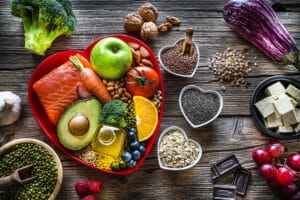Who would have thought the common watermelon is packed with so much nutrition?
Most of us are surprised to discover that there’s any nutrition at all in this traditional summer treat. The common perception about watermelon is that it’s low-calorie fruit, mostly water with taste, harmless, but not a good choice for nutritional value. Wrong! Watermelon has the most nutrition per calorie of many common foods.
What Watermelons Have to Offer
Besides tasting great and being low in calories because watermelon is mostly water, it is an excellent source of Vitamin C, a major antioxidant. It has a high beta carotene concentration, thus offering a fair amount of vitamin A as well. Both beta carotene and vitamin A help support good eyesight and prevent glaucoma.
High intakes of combined beta-carotene and vitamin C have demonstrated, through clinical and scientific studies, a propensity for warding off various cancers, heart disease, reducing arthritis symptoms, and minimizing asthmatic breathing problems.
Another surprise nutrient in watermelon is Vitamin B, especially B1 (thiamine) and B6 (pyridoxine).Thiamine is important for maintaining electrolytes and nervous system signal transmissions throughout the body. Pyridoxine is essential for enzymatic functions that convert food into cellular energy.
The meat or pulp of watermelons is usually pink or red. Those colors signal the highest content of lycopene, an antioxidant lauded for its ability to greatly minimize cancer risks. From the Worlds’ Healthiest Foods website (source below), “ … lycopene has been repeatedly studied in humans and found to be protective against a growing list of cancers. These cancers now include prostate cancer, breast cancer, endometrial cancer, lung cancer and colorectal cancers.”
Then there are the minerals – potassium and magnesium – which watermelons offer abundantly. Potassium is important for cardiovascular health, brain health, and helping the kidneys eliminate kidney stone- forming calcium as well as assisting with the body’s fluid retention.
Magnesium is considered the master mineral. It is involved with over 300 cellular metabolic functions. It happens to be lacking in our diets because of our depleted topsoils. Magnesium deficiencies are directly or indirectly related to most of our population’s poor health issues. Obvious symptoms are irritability, tension, sleep disorders, and muscular cramping. After that, it’s heart attacks and other serious illnesses.
Picking and Handling Watermelons
Organic watermelons are hard to find and pricey when found. But conventionally grown watermelons are not among the dirty dozen of the most heavily sprayed produce. Instead, they are actually among the fifteen most clean of non-organic fruits and vegetables.
And so far they’re not GMO or GMO threatened by seed contamination from wind or bee pollination since there are no genetically engineered watermelons grown anywhere yet.
The personal preference of many, seedless watermelons, have been created through good old fashioned long term cross breeding. There’s a big difference between this and GMO. Non-GMO hybrids don’t contain pesticide genes that kill off our friendly gut bacteria, which are essential to good digestion and a strong immune system. Nor do they contain toxic GMO starter genes that wreak havoc with our DNA and make us sick and sterile.
As convenient as those seedless melons are (more eating with less work), they tend to be a little trickier to select at the right ripeness than their seed-filled sisters. Sometimes watermelons are pre-cut, so you can easily avoid any that have some white or light coloring in the pulp. And you can press lightly at different spots to make sure they’re not overripe (too soft) while observing the pink/red color quality.
Whole melons are a little more challenging. One clue to watch for is an external faded discoloration in a spot on the area where the melon sat before being picked. Many claim this is your first hint for picking one to perform the knock and sound test on. Whether you can observe faded spots on the flat side of a melon or not, go on to the knock and sound test.
Hold the melon to your ear, or If it’s too heavy for you, simply knock on it where it sits. What you hear should be a somewhat hollow echo, a sound of turgidity. If you hear and feel a soft “thunk” that sounds like it’s filled with mush, try another. But too sharp of a hollow sound may not be optimum either. Trial and error will help you develop the knack for picking the best.
Watermelons lose less nutritional value when cut and stored in the fridge than most other produce. It’s wise to pull the melon out of the fridge long enough for it to go to room temperature before eating or serving. This maximizes its phytonutrient capacity.
As with most other fruits, watermelon should be eaten apart from meals. For digestive purposes, fruit is best consumed away from other foods. Indulge in as many great tasting and refreshing watermelon treats as you want this summer. Watermelon is more nutritious than most know.
Sources for more information include:
http://www.whfoods.com/genpage.php?tname=foodspice&dbid=31#nutritionalprofile
http://naturalhealthnews.blogspot.com/2010/07/enjoy-your-holiday-gmo-free.html
http://www.watermelon.org/health.asp
http://abcnews.go.com/GMA/story?id=8315650&page=1




